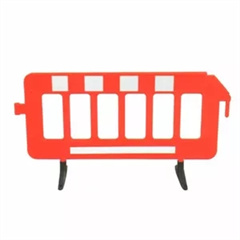Signboards that tell your brand’s story are a powerful marketing tool that can engage customers, create a memorable brand image, and convey the essence and values of your business. Here are some key considerations and examples for creating signboards that effectively tell your brand’s story:
- Clear Brand Identity: Before you design a signboard, it’s crucial to have a clear understanding of your brand’s identity, including its mission, values, and unique selling points. Your signboard should reflect these elements.
- Logo and Visual Identity: Incorporate your logo and visual branding elements prominently on the signboard. These elements should be consistent with your brand’s colors, fonts, and style to ensure immediate recognition.
- Message and Tagline: Craft a concise and compelling message or tagline that encapsulates your brand’s story or value proposition. This should be prominently displayed on the signboard. For example, if you run an eco-friendly café, your tagline might be “Serving Sustainability, One Cup at a Time.”
- Imagery and Graphics: Use imagery or graphics that convey your brand’s story. If you’re a bakery with a long family history, consider including a picture of your founders or the vintage equipment you use in your baking process.
- Narrative Elements: Consider using storytelling techniques on your signboard. Share a brief history of your brand, its origins, and the journey that brought it to where it is today. Highlight any unique anecdotes or milestones.
- Materials and Design: Choose materials and design elements that align with your brand’s story. For example, if your brand is all about simplicity and minimalism, opt for a clean, modern design. If it’s a nostalgic or heritage-focused brand, use materials that evoke a sense of history.
- Interactive Elements: If appropriate for your business and location, consider adding interactive elements to your signboard. QR codes can lead customers to videos, augmented reality experiences, or a mobile website that provides more in-depth information about your brand’s story.
- Emotional Connection: Craft your signboard to evoke emotions and create a connection with passersby. Use storytelling techniques that resonate with your target audience.
- Local Relevance: If your brand has strong local ties or supports local causes, highlight these connections on your signboard. This can foster a sense of community and goodwill.
- Maintenance and Durability: Ensure that your signboard is well-maintained and durable. A worn or neglected signboard can send the wrong message about your brand’s commitment and quality.
Here are a few examples of how different businesses might use signboards to tell their brand’s story:
- Artisanal Coffee Shop: Display the journey of sourcing and roasting coffee beans, with images of the farmers and the roasting process. Share the history of the shop’s founders and their passion for coffee.
- Boutique Clothing Store: Use the signboard to showcase the unique fashion sense of your brand. Share stories about how you curate your collections, the inspiration behind your designs, and your commitment to sustainable fashion.
- Historic Inn: Highlight the inn’s rich history and notable guests, showcasing vintage photographs and anecdotes. Emphasize the warm and welcoming atmosphere that has been cherished for generations.
- Tech Startup: Showcase the company’s innovation and tech-savvy nature. Display achievements, milestones, and the team’s commitment to cutting-edge solutions.
In conclusion, signboards that tell your brand’s story can be a valuable asset in building brand recognition and creating a connection with your audience. When designed thoughtfully and aligned with your brand’s values, they can leave a lasting impression on potential customers and help build brand loyalty.







